|
HOME: www.hiltonpond.org |
|||
|
|
|
SAVVY SEVEN-12's IN COSTA RICA: As noted last week in our photo essay about Neotropical roadside butterflies, we departed Hilton Pond Center for Costa Rica on 27 January to be met at the San Jose airport by our long-time guide, interpreter, friend, and colleague Ernesto Carman Jr. and his wife Elaida Mayorga Villanueva (below left). • PRE-EXPEDITION ACTIVITIES • After our airport pick-up on 27 January and the subsequent two-hour drive east to Paraíso, the 2012 Omega Team (trip leader and principal investigator Bill Hilton Jr. and irreplaceable tico guide and co-investigator Ernesto Carman Jr.) decided to spend a day at nearby Ujarrás where our November 2011 citizen scientists (the Chayoteers) had observed and mist netted Ruby-throated Hummingbirds, Archilochus colubris, in a riparian Chayote plantation. Late on the afternoon of 28 January 2012 the Omega Team (below right, Bill banding and 'Nesto scribing data) returned to El Cas to deploy several Dawkins traps; Ela had a couple of medical appointments in San Jose to which Ernesto accompanied her, so we spent much of our days at Paraíso compiling photos for last week's essay on Roadside Butterflies of Costa Rica
All text & photos © Hilton Pond Center • DAY ONE • Next morning (2 February) the Omega Team was up bright and early to scout our study site to see if everything was as it needed to be for hummingbird banding success. We've had some unfortunate circumstances in recent years with our Costa Rican locales, mostly because all the well-tended hummer-attracting fields of nectar-rich Aloe Vera have been on private property subject to the owners' wishes. Our initial site was about ten miles north of Liberia near the small town of Cañas Dulces (above), where between 2004 and 2010 we trapped and mist netted nearly 700 Ruby-throated Hummingbirds--the first time anyone had ever conducted a systematic long-term study of this North American breeder on its Central American wintering grounds.
All text & photos © Hilton Pond Center For seven years we accumulated unprecedented info about molt timing, population dynamics, and site fidelity at Cañas Dulces, so imagine our shock last year when we arrived to find "our" 300-plus acres of aloe had been bulldozed, planted in grass (above), and converted to a cattle farm. (Last year's trials and tribulations are chronicled at Things Go Awry.) Fortunately, we were able to fall back to an alternate site just south of Liberia at a commercial aloe farm/processing plant owned then by Carrington Laboratories.
All text & photos © Hilton Pond Center In 2009 and 2010 we had to settle for running mist nets atop a high berm on a dusty road (above & below right) just outside this finca's northern boundary. Tio Pelón--the largest rice grower in Costa Rica--purchased the aloe factory and farm from Carrington in late 2010, This year we had high hopes for working at NaturAloe and again received José's permission to go inside. That was the "good" news. The "less good" news--and we've come to expect bad news on our Neotropical study sites the past few years--was Pelón engineers had decided irrigation lines and drainage ditches weren't laid out in optimal fashion at NaturAloe; thus, workers were involved with digging up and transplanting several aloe fields--including a productive one west of where we had deployed nets in 2011 (see red line on map below). Nonetheless, some fields were blooming--albeit not abundantly--with tall yellow flower stalks, so the Omega Team decided when our citizen scientists were ready on the morrow we would run three lines of 16 mist nets (north, south, and east, in green on map below)--close to how we had deployed them in 2011.
All text & photos © Hilton Pond Center With that important decision out of the way we were off to the Liberia airport to meet the seven citizen scientists who would be flying in to help in 2012. Four of them arrived; alas, three--the travelers from New York--missed connections back in the U.S. and were delayed until an evening flight.
All text & photos © Hilton Pond Center After claiming baggage and clearing customs our incomplete group boarded a sleek and shiny air conditioned mini-bus for a short ride a few miles west of the airport to a spot appropriately named Café. This new facility (above) on the road to northern Guanacaste's beaches is operated by Ernesto's sister Tina Carman and partner Oscar López. • DAY TWO • On 3 February we were up before dawn thanks to Ernesto's dependable woodpecker-like knock on each participant's door. Buffet breakfast at El Sitio included the traditional black beans and rice, plus eggs, pastries, juices, and several kinds of fresh tropical fruit. After filling our respective bellies the group boarded the bus for a short ride to NaturAloe and an introductory lesson on how to string mist nets onto poles and deploy them effectively. The first nets went up along the East line shown on the aerial photo above, followed shortly thereafter by nets on the South line. (The North line wasn't deployed until a few days later.) As soon as nets were in place our citizen scientists' next task was to find a more or less inconspicuous spot from which they could monitor and shout out "Bird!" as soon as anything was snared. It didn't take long.
All text & photos © Hilton Pond Center At 7:25 a.m.--before we even had all the nets in place--the first bird hit the first net in the South lane. Fittingly it was a female Ruby-throated Hummingbird (above). How amazing our citizen scientists had traveled thousands of miles to Costa Rica and the first bird captured was actually our target species! Things were happening fast. Ethelyn Bishop--veteran of our November expedition to Ujarrás--knew our record-keeping procedures, so we asked her to serve as scribe as we got out the banding tools. It's a good thing, too, because that first ruby-throat was followed soon thereafter by six more females at 8:17 a.m., 8:22, 8:40, 8:45, 8:55, and 9:18--for a daily total of seven RTHU. Not bad at all for the group's first day in the field! (We were happy Ela was feeling well enough this day to help extract a few birds from nets.)
All text & photos © Hilton Pond Center Our federal bird banding permit allows us to band any Neotropical migrant we capture in Costa Rica because there's always the possibility it will be encountered back north in the U.S. or Canada. With that in mind, on 3 February we also netted and banded three Tennessee Warblers and five Orchard Orioles. Despite catching seven Ruby-throated Hummingbirds, however, our most exciting bird of the day was a female Baltimore Oriole whose right leg already bore an aluminum band that wasn't nearly as shiny as those we were putting on our new captures. A quick check of her band number (#2411-56744) indicated she had been caught at NaturAloe on 7 February 2011--almost exactly one year previously and in the very same net! This was a remarkable demonstration of site fidelity. How remarkable that this oriole had spent last winter in aloe fields south of Liberia, flew off last spring to North America to breed, and came back this winter to precisely the same location. Although this phenomenon seems almost impossible to humans who sometimes get lost in their own hometowns, such long-distance journeys apparently happen all the time among birds--something we wouldn't know if we didn't band and re-encounter them later on. This was the first time we had documented site fidelity among Baltimore Orioles within Costa Rican Aloe Vera plantations, but in past years we've also had two Orchard Orioles and a Yellow Warbler return to our Cañas Dulces.
All text & photos © Hilton Pond Center With exceptional first day success under their belts the group was feeling pretty good, but at noon we needed to take down the nets and pack everything away so we could return to El Sitio for lunch and a break. With the afternoon open we decided to travel half an hour southwest to scout Tio Pelón's 22,000 rice plantation, where we recently learned the company had transplanted more than a hundred acres of Aloe Vera from the NaturAloe facility. We'd never visited this place and were pleased to see plenty of Ruby-throated Hummingbirds flying about and feeding on aloe nectar. We made lots of observations and concluded this locale could serve as a back-up study site, its only disadvantage being a longer travel time prior to morning mist net deployment. One nice thing about Pelón is the fields were surrounded by more natural vegetation--the company had set aside several thousand acres as a nature reserve--so we got our first looks at Mantled Howler Monkeys and the Double-striped Thick-knee (above), an oddly named bird in the Stone-curlew Family (Burhinidae). After scouting everything the Pelón rice plantation had to offer we returned to El Sitio for supper and our usual evening meeting; there we talked about the group's field results and provided in-depth commentary about behavioral ecology of Ruby-throated Hummingbirds. And since each of our Neotropical expeditions gets a nickname by which it is known forever, we also asked participants to provide secret written nominations for what they thought this year's group should be called. • DAY THREE • Excited by the previous day's successes, the group--as yet without a name--was up bright and early on 4 February. Now experienced, they got the mist nets up in a hurry and watched as the first two female Ruby-throated Hummingbirds were snared right away at 7:10 and 7:15 a.m. More RTHU followed at 8:35 a.m., 9:00, 9:05, 9:23, 10:30, 10:48, and 11:08--am impressive total of nine hummers for the day. Other species don't stay out of our non-selective nets, of course, so we also caught and banded four more Tennessee Warblers, three Baltimore Orioles, and 11 Orchard Orioles. Remarkably, at 8:43 and 8:45 a.m. we caught two Yellow Warblers in adjoining nets and BOTH had old bands on their legs! Once again we had to refer to our archival records and learned these two birds originally had been caught last year in the same general area at NaturAloe. The first (#2590-32949) was banded as an after-hatch-year male on 3 February 2011; the other (#2590-32964) was a second-year female when banded on 5 February 2011. It was 'way cool to recapture two Yellow Warblers a year after banding, but the group wasn't finished yet. At 10:30 a.m. they caught yet another banded Baltimore Oriole (#2411-56738), this one banded at NaturAloe as an after-second-year male on 7 February 2011. That made four following-year returns in two days for the group. Site fidelity indeed!
All text & photos © Hilton Pond Center That afternoon we went off on a leisurely bus excursion, first to eat lunch again at Café and then to explore an old catfish farm a few miles west of Liberia's airport. The site is popular with birding groups because it's one of few places in this part of Guanacaste with standing water during the dry season. Numerous shallow pools--some of which also have been used to grow rice or raise freshwater shrimp--are magnets for waterfowl and wading birds. We saw numerous species in and around the water, including several Black-necked Stilts, numerous Jaçanas, and hundreds of Blue-winged Teal (above) that spooked as we approached. • DAY FOUR • Following two successful days of capturing new birds AND returns at NaturAloe 3 (NA3), we elected to move operations to the old Carrington Perimeter (CP) road along the northwest boundary of the finca--except this year we placed the nets on a berm INSIDE the fence rather than on the dusty road OUTSIDE the barbed wire. We had run mist nets on the road berm (CP1 & CP2) in 2009, 2010, and part of 2011 but last year moved to the inside berm (CP3) after we got José's permission to enter the facility. Despite good results at NA3 on Days 1 & 2 this year, we moved to CP3 because we wanted to see if we could recapture any birds we banded there in previous field seasons. Even though CP3 and NA3 were less than a half mile apart as the hummingbird flies, our banded birds of several species were demonstrating very precise site fidelity; thus, we weren't expecting crossover between the two sites.
All text & photos © Hilton Pond Center After surveying where we wanted mist nets to go at CP3 the now-experienced group set them up quickly (above) and we had our first Ruby-throated Hummingbird--another female--at 8:24 a.m. More female RTHU followed at 9:25, 10:00, 10:08, 11:12, and 11:55 a.m., 12:00 noon, and 12:24 p.m. Of importance were our first two MALE ruby-throats of the year--both immatures--at 9:25 and 11:17 a.m. Together these ten birds brought our 2012 RTHU number to 26, a respectable total for three days in the field. Incidentally, one of the young males (below) was especially scruffy, with a brown forehead of faded juvenal feathers and an incomplete gorget half filled with quill feathers--most of which had not yet revealed their ruby-red color.
All text & photos © Hilton Pond Center On 5 February we also banded two more Tennessee Warblers, a Yellow Warbler, and--lest we forget a whopping 19 Orchard Orioles that apparently liked the aloe field on the perimeter. Something of greater importance happened at 10:35 a.m. when a group member called out a BANDED female ruby-throat was in the net, and we went running. Sure enough, the hummer carried an old band (#C52438), applied on 31 January 2011 when she was caught in almost the same net configuration (but outside the fence). The returning Yellow Warblers and Baltimore Orioles we had recaptured already at NA3 were themselves exciting, but to encounter one of our "old" ruby-throats was a main reason for our coming all the way to Costa Rica to study the species on its wintering grounds. #C52438--now an after-second-year bird--was our tenth RTHU banded since 2004 in Costa Rica to return in a later year, an undeniable indication these hummers are showing strong site fidelity among the aloe in Guanacaste Province.
All text & photos © Hilton Pond Center We had another bonus on the morning of 5 February because José Zuniga, the plant manager at NaturAloe, accepted our invitation to bring his wife and daughters to the study site so we could show them how and why we band hummingbirds. José (at left in photo above) and wife Daisybell (standing) looked on with scribe Sally Tucker as we helped twins Andrea (gray hat) and Adrianna handle and release several birds after banding. Interpreter Ernesto was out extracting birds from the nets so we were relieved to be able to communicate easily with the entire Zuniga family because the girls were in an English-language immersion program at school. The Zunigas were keenly interested in the banding process and the twins accepted our assignment to tell their teachers and fellow students what they had learned from us about birds and long-distance migration. Since we were in the field well past noon we gave participants the rest of the afternoon off but gathered as usual for our evening meeting. There, we described various nicknames that had been suggested for the group and revealed the final decision of the judges: The seven members of our February 2012 expedition to Guanacaste Province, Costa Rica would forever more be known by the elegant moniker of Savvy Seven-12's. • DAY FIVE • Yes, the Savvy Seven-12's--fiercely proud of their new nickname--did so well catching birds at CP3 we opted to try once more on 6 February, getting an earlier start because the iron rebars on which we mount net poles had been pounded into place the day previous. By 7:20 a.m. the Orchard Orioles were back again-- we caught seven more in the next 80 minutes--but that was about it for the day. Fortunately, we didn't get skunked on ruby-throats, with one new female hitting the nets at 8 a.m. It turned out to be a long, slow morning of waiting and watching with not much to show for our efforts, so the group shut the nets and pulled the rebars a little before noon, returned to El Sitio for lunch, and had plenty of time for early afternoon showers and siestas.
All text & photos © Hilton Pond Center About 4 p.m. we gathered up everyone, boarded the bus, and headed north on the Pan American highway to see if we could observe what trip leaders mysteriously described as a "wonder of nature." We stopped at the turnoff to Cañas Dulces, exited the bus, lined up along the fence on the corner, and advised folks to have their binoculars and cameras available. And then we waited while the group guessed just what we might be waiting for. Among other things, it was a gorgeous day and the sun was setting behind us as a nearly full moon rose in the sky ahead; a Tropical Kingbird in a tall snag (above) accented the view--but none of this was what the leaders were anticipating. Parrots flew over and we could hear Zebu cattle lowing in the distance, but even these weren't the phenomenon we had showed to several previous Costa Rica groups. Oddly enough, what we expected to happen didn't. For the past several years a fallen but still-living tree had been the evening roost--el dormitorio as Ernesto calls it--for thousands of Scissor-tailed Flycatchers that would fly in at dusk and jostle for overnight positions within the foliage. Between last year and this something must have happened, for as we looked skyward we did see dozens of scissor-tails, but almost all of them kept going. Phooey. It was a pleasant evening anyway. • DAY SIX • Our first several Costa Rica hummingbird expeditions were only eight days long, but a few years ago we added a "Hump Day" when folks could sleep in for an hour or two and take a break in the middle of our six days of field work. (This year we actually postponed Hump Day by 24 hours so we could leave those rebars in the ground at CP3 and run mist nets two days back-to-back.) In 2012 we decided to devote all of Hump Day to an excursion that for several years we had been cramming into a half day: A visit to Santa Rosa National Park, followed by some time at Junquillal Beach. The park is about 25 miles north of Liberia just off the Pan American Highway and perhaps ten miles shy of the Nicaraguan border.
All text & photos © Hilton Pond Center Santa Rosa is a gemstone of the Costa Rica park system and the only one that truly showcases the tropical dry forest that once dominated of Guanacaste Province. Relatively few visitors to Costa Rica ever see the unique attributes of the tropical dry forest, opting instead to spend time in the lush, green growth of the much wetter tropical rain forests. The dry forest has two distinct seasons and components: Deciduous areas in which shrubs and trees lose their leaves during the dry season; and evergreen areas where woody plants retain their leaves throughout the year. Evergreen dry forests are usually in riparian locales with more soil moisture. Santa Rosa has both evergreen and deciduous woodlands, and each has its own special assortment of flora and fauna. Among our favorite animals in the park are the primeval-looking Ctenosaurs, or Black Iguanas (adult male above).
All text & photos © Hilton Pond Center Santa Rosa is also a good place to view epiphytes--plants that grow non-parasitically on other plants. We always stop at one big tree whose limbs bear a real diversity of epiphytic cacti, bromeliads, mosses, ferns, lichens, and even flowering orchids such as the one above. At heights of 15 feet or more above the forest floor all these organisms are protected from trampling and are closer to sunlight needed for photosynthesis. Leathery leaves of the orchid in our photo help prevent water loss during dry seasons and allow it to bloom profusely despite not having roots in the soil.
All text & photos © Hilton Pond Center Junquillal Beach, about 45 minutes from Santa Rosa, provided an idyllic contrast to the hot, dry aloe vera fields where we'd been working at catching hummingbirds. The beach was essentially deserted--public schools were about to open and families were likely out shopping for clothes and supplies--so the group delighted in watching fork-tailed Magnificent Frigatebirds (female above) soaring gracefully with no disturbance from noisy crowds of swimmers. A few hardy souls waded into the surf--but because the Humboldt current brings cold water up from Antarctica nobody went swimming for long. • DAY SEVEN • We had such a poor day on 6 February over at CP3 the group decided to back to NA3 for their fifth day of field work. They had to re-set the rebars in order to deploy nets but were so efficient by now they caught the first female Ruby-throated Hummingbird at 7:43 a.m., followed by three more at 7:50, 8:55, and 9:40 a.m. They also caught the first male RTHU at NA3--a second-year bird (below) with a partial red gorget.
All text & photos © Hilton Pond Center What was interesting about this particular immature male was two different shades of red among throat feathers that were iridescent. Those closest to center were bronzy and somewhat worn, while the lateral one was fresh-looking and ruby-red. We suspect the red feather was acquired recently on his wintering grounds in Costa Rica and the others were old plumage the youngster brought with him on his first flight from North America. Red in a ruby-throat's gorget doesn't come from pigment but from tiny bubbles and grooves that scatter light. We've hypothesized wear and tear on older red feathers--perhaps in conjunction with ravages of the tropical sun's ultraviolet rays--cause structural change that, in turn, makes the metallic feathers look less red. But wait, there's more! At 10:22 a.m. there was another of those "banded hummingbird in the net" jubilations, and--sure enough--#C52468 had gotten snared. This female was captured on 4 February 2011 at NA1 and was now an after-second year bird. And as if this wasn't enough, the group pulled in an Orchard Oriole that also bore an old band (#2291-73946) placed on his leg on 3 February 2011 when he was a second-year bird. We paid close attention to this individual because his body plumage was black and brick red--except for bright yellow feathers around his knees (above); these were about the color one would expect on an immature male OROR (below). Because we banded him last year as a second-year male we knew his exact age and wondered if "yellow knee" might be indicative of third-year Orchard Oriole males. We'll be looking more closely at this on OROR we capture this spring and summer back at Hilton Pond Center.
All text & photos © Hilton Pond Center That afternoon the group went off to Rincon de la Vieja National Park, up slope from Liberia. Rincon is geothermally active--a new power plant under construction takes advantage of this phenomenon--but last erupted in a big way more than 3,500 years ago; there was a lesser blow-up in 1998. On the way up the mountain we stopped at small river that had cut its way through surrounding rock, making a picturesque gorge. On the rock wall we saw petroglyphs that had been carved in the distant past by indigenous peoples.
All text & photos © Hilton Pond Center Along the trail at Rincon were several thermal pools that--despite scalding-hot water temperatures above 200 degrees Fahrenheit--hosted colonies of sulfur-fixing bacteria. The odor and the hot steam wafting from the bubbling pools provided a memorable experience, as did the mud pots depicted above. • DAY EIGHT • The 9th of February dawned as our sixth and final day of group field work in the aloe fields, so the Savvy Seven-12's were especially eager to get moving at NA3. The birds cooperated nicely, with four Tennessee Warblers and a Yellow Warbler simultaneously hitting the nets right away at 7:30 a.m. (We ended up with nine TEWA and four YEWA that day.) We also netted the year's first Painted Bunting (a female), five Baltimore Orioles, and nine Orchard Orioles. Despite this rush of Neotropical migrants, we only netted one female Ruby-throated Hummingbird, giving this year's citizen scientists 33 RTHU--our third-lowest total since 2004.
All text & photos © Hilton Pond Center Regardless of the low hummingbird number, it's not about quantity but quality--and the quality of work conducted by Savvy Seven-12's went up one more notch on 9 February with their capture of a Yellow Warbler with tarnished leg jewelry. It turned out to be #2590-32967, banded on 7 February 2011 as a second-year male--yet another returnee from a preceding year. These Savvy Seven-12's were the undisputed champions of capturing "old" birds; in 2012 they had demonstrated site fidelity among the Aloe Vera for three Yellow Warblers, two Baltimore Orioles, one Orchard Oriole (third-year male above), and--most important--two Ruby-throated Hummingbirds . . . a total of EIGHT Neotropical migrants, all of which hatched out in North America, came south for banding, went back north, and returned to almost exactly the same spot for recapture. As noted above, it's phenomenal that birds can do this, and it's almost as amazing the Savvy Seven-12's were able to snare so many returns. To put things in perspective, during 11 previous Operation RubyThroat expeditions to Guanacaste Province we had recaptured only nine old RTHU, two OROR, and one YEWA--and this year the Savvy Seven-12's had eight of their own. While it's true Aloe Vera is not native to Costa Rica and is grown in commercial operations, it's apparent from all these on-going later-year encounters that aloe plantations are important winter habitat for nectar-eating birds that return to the same spots in subsequent non-breeding seasons. Interestingly, in all four species for which we have returns both males and females have shown site fidelity. It's because of all this the subtitle for the report you're now reading is "There's No Place Like Home."
All text & photos © Hilton Pond Center At noon we made one last call to close down operations for this year's group. Participants pulled the nets and rebars and we all went back to El Sitio for showers--but not before everyone assembled for our traditional group photograph above. (Don't we all look professional in those spiffy white Operation RubyThroat T-shirts?) We should mention that mid-morning on 9 February we were joined at NaturAloe by Juan Diego Vargas and Mirna Salas (at right above), two up-and-coming Costa Rican naturalists who helped part-time on previous expeditions. These two young people are graduate students in ecological tourism at the University of Costa Rica. They have a bright future helping their home country protect natural resources while stimulating the economy with a steady flow of international visitors who believe in and support the effort. After the group photo and showers it was time for our traditional trip to downtown Liberia and a family-style lunch at the open-air "Chinese restaurant" (Paso Real, a Latino eatery whose owners are of Chinese descent). • DAY NINE • Day Nine (10 February) is always sad because it's when our group members load up the bus for a final ride--this time to the Liberia airport for fly-out. Prior to loading luggage we asked ever-vigilant trip compiler Ethelyn Bishop to read the list of birds observed during the week; she had recorded a respectable total of 96 species seen--not bad for an expedition whose main purpose had NOT been to tick off different kinds of birds.
All text & photos © Hilton Pond Center After dropping the Savvy Seven-12's at the Liberia airport for check-in, the Omega Crew went off to lunch at Tina's home--NOT at her restaurant--where we got re-acquainted with five-month-old Santiago (with Uncle 'Nesto, above), the youngest tico in the extended Carman family. Then it was back to El Sitio for a quick change of clothing and to pick up gear so we could return to NaturAloe for follow-up banding work after our group departed. We wanted to spend a little more time at CP3 and by 4 p.m. had set up about half our mist nets (n=8) inside the fence. This turned out to be a very good decision. With Ernesto and Juan Diego tending the nets and Mirna serving as scribe, we quickly banded what else . . . 15 Orchard Orioles.
All text & photos © Hilton Pond Center As the light began to wane some tinier birds hit the nets, and at 5:30, 5:47, and 5:49 p.m. we caught three additional female Ruby-throated Hummingbirds, bringing our 2012 total to 36. Of those, 16 were caught at CP3 and 20 at NA3; the overall sex ratio was three males (all second-year immatures) to 33 females. Both returning ruby-throats also were females. We're not exactly sure what to make of this wildly skewed abundance of females--or of this year's absence of adult males. We're beginning to think the female RTHU--which is about 25% larger than the male--may dominate and chase males from aloe into "sub-optimal" habitats with less available nectar. Perhaps it wasn't coincidental we caught two of this year's three males on the perimeter of the aloe fields adjacent to scrub habitat with natural vegetation. (That said, we frequently saw female ruby-throats feeding on native trees along the perimeter, as in the photo above. Maybe females just feed wherever they want and the males feed where ever they can.) Of course, there might be some other entirely different explanation; for example, could it be most male ruby-throats don't migrate as far south as Liberia and spend the winter in Nicaragua or further north? It's questions like this--simple on the surface but not easy to answer--that compel us to continue our midwinter Operation RubyThroat research in Costa Rica and expand northward into the rest of Central America. • FOLLOW-UP ACTIVITIES • We left the rebars in place at CP3 in the hope of getting in an extra day of mist netting on 11 February, but Ernesto got word overnight that Ela was having serious headaches back in Paraíso. For everyone involved, Ela's health is more important than the research, so we packed up our personal belongings and field gear, went back to NaturAloe to retrieve the rebars, and started the journey back east on the Pan American Highway. We bid adieu to Juan Diego and Mirna at Puntarenas where they caught the San Ramon bus for home, and the Omega Crew continued on toward San Jose. There we met up with Ernesto's mother, Linda, who had brought Ela. 'Nesto stayed with his wife and took her to the emergency room, where the diagnosis was Ela's headaches came from dehydration following nausea from the chemotherapy. While the young couple stayed at the hospital, Linda took us back to Finca Cristina where we bedded down for the night in a room she and husband Ernie so graciously provide for us pre- and post-expedition. Medical treatment at the hospital helped Ela headaches subside and we were able to spend some quality time with her at the finca before we had to return to the U.S.
All text & photos © Hilton Pond Center On 14 February, Ela felt well enough to ride when Ernesto took us to the airport in San Jose. As we drove up to the drop-off point, a tour bus pulled up right behind us and we immediately recognized the man behind the wheel. It was Guillermo Hernandez, known far and wide as "Bogotes" or "Whiskers" because of his massive Poncho Villa moustache (above). Whiskers, a lover of Bob Marley's reggae music, had been our driver on several previous expeditions; we thought it ironic we encountered him again out of the blue as we prepared to depart. We hugged Whiskers and waved goodbye and then sat down with Ela and 'Nesto for a final Costa Rican lunch and lots more hugging all around. Bidding farewell, we boarded our plane for the 4.5-hour flight to Charlotte, where we got in that evening at 6:30 p.m. to be met by loving wife Susan. This earlier-than-usual arrival allowed us plenty of time to dine out at a Japanese bistro while celebrating Valentines Day--which also happened to be our 41st wedding anniversary. Pura vida! All text & photos © Hilton Pond Center
POSTSCRIPT: It's with deep thanks we acknowledge the contribution the Savvy Seven-12's, without whose financial support we would not have been able to conduct our just-completed research expedition to Guanacaste. We likewise appreciated their good humor, flexibility, and dedication to task that made the 2012 trip successful at many levels. We hope to see them again some year in Ujarrás or Belize or Nicaragua--or even back in in the aloe fields of Guanacaste Province, Costa Rica. As always, we cherished the opportunity to work shoulder-to-shoulder with Ernesto Carman Jr., without whom we never would have known about Ruby-throated Hummingbirds in the Aloe Vera. GUANACASTE, COSTA RICA Each of our Operation RubyThroat expeditions to the Neotropics provides opportunities to learn something new about Ruby-throated Hummingbirds on their wintering grounds. Some of those discoveries are described above or in previous summary reports. For the sake of expediency, we provide below a simple summary of this year's banding and recapture results.
TABLE 3: Bandings of
TABLE 4: All Species Banded
All text & photos © Hilton Pond Center |
|||||||||||||||||||||||||||||||||||||||||||||||||||||||||||||||||||||||||||||||||||||||||||||||||||||||||||||||||||||||||||||||||||||||||||||||||||||||||||||||||||||||||||||||||||||||||||||||||||||||||||||||||||||||||||||||||||||||||||||||||||||||||||||||||||||||||||||||||||||||||||||||||||||||||||||||||||||||||||||||||||||||||||||||||||||||||||||||||||||||||||||||||||||||||||
|---|---|---|---|---|---|---|---|---|---|---|---|---|---|---|---|---|---|---|---|---|---|---|---|---|---|---|---|---|---|---|---|---|---|---|---|---|---|---|---|---|---|---|---|---|---|---|---|---|---|---|---|---|---|---|---|---|---|---|---|---|---|---|---|---|---|---|---|---|---|---|---|---|---|---|---|---|---|---|---|---|---|---|---|---|---|---|---|---|---|---|---|---|---|---|---|---|---|---|---|---|---|---|---|---|---|---|---|---|---|---|---|---|---|---|---|---|---|---|---|---|---|---|---|---|---|---|---|---|---|---|---|---|---|---|---|---|---|---|---|---|---|---|---|---|---|---|---|---|---|---|---|---|---|---|---|---|---|---|---|---|---|---|---|---|---|---|---|---|---|---|---|---|---|---|---|---|---|---|---|---|---|---|---|---|---|---|---|---|---|---|---|---|---|---|---|---|---|---|---|---|---|---|---|---|---|---|---|---|---|---|---|---|---|---|---|---|---|---|---|---|---|---|---|---|---|---|---|---|---|---|---|---|---|---|---|---|---|---|---|---|---|---|---|---|---|---|---|---|---|---|---|---|---|---|---|---|---|---|---|---|---|---|---|---|---|---|---|---|---|---|---|---|---|---|---|---|---|---|---|---|---|---|---|---|---|---|---|---|---|---|---|---|---|---|---|---|---|---|---|---|---|---|---|---|---|---|---|---|---|---|---|---|---|---|---|---|---|---|---|---|---|---|---|---|---|---|---|---|---|---|---|---|---|---|---|---|---|---|---|---|---|---|---|---|---|---|---|---|---|---|---|---|---|---|---|---|---|---|---|---|---|---|---|---|---|---|---|---|---|---|---|---|---|---|---|---|---|---|---|
 The Piedmont Naturalist, Volume 1 (1986)--long out-of-print--has been re-published by author Bill Hilton Jr. as an e-Book downloadable to read on your iPad, iPhone, Nook, Kindle, or desktop computer. Click on the image at left for information about ordering. All proceeds benefit education, research, and conservation work of Hilton Pond Center for Piedmont Natural History. The Piedmont Naturalist, Volume 1 (1986)--long out-of-print--has been re-published by author Bill Hilton Jr. as an e-Book downloadable to read on your iPad, iPhone, Nook, Kindle, or desktop computer. Click on the image at left for information about ordering. All proceeds benefit education, research, and conservation work of Hilton Pond Center for Piedmont Natural History. |
|
|
"This Week at Hilton Pond" is written and photographed by Bill Hilton Jr., executive director of Hilton Pond Center for Piedmont Natural History
|
|
|
If you Twitter, please refer
"This Week at Hilton Pond" to followers by clicking on this button: Tweet Follow us on Twitter: @hiltonpond |
Comments or questions about this week's installment? Send an E-mail to INFO. (Be sure to scroll down for a tally of birds banded/recaptured during the period, plus other nature notes.) |

Click on image at right for live Web cam of Hilton Pond,
plus daily weather summary
Transmission of weather data from Hilton Pond Center via WeatherSnoop for Mac.
|
--SEARCH OUR SITE-- For a free on-line subscription to "This Week at Hilton Pond," send us an |
|
Thanks to the following fine folks for recent gifts in support of Hilton Pond Center for Piedmont Natural History and/or Operation RubyThroat: The Hummingbird Project. Your tax-deductible contributions allow us to continue writing, photographing, and sharing "This Week at Hilton Pond." Please see Support if you'd like to make a gift of your own.
|
If you enjoy "This Week at Hilton Pond," please help support Hilton Pond Center for Piedmont Natural History. It's painless, and YOU can make a difference! (Just CLICK on a logo below or send a check if you like; see Support for address.) |
|
Make credit card donations on-line via Network for Good: |
|
Use your PayPal account to make direct donations: |
|
If you like shopping on-line please become a member of iGive, through which 950+ on-line stores from Amazon to Lands' End and even iTunes donate a percentage of your purchase price to support Hilton Pond Center.  Every new member who registers with iGive and makes a purchase through them earns an ADDITIONAL $5 for the Center. You can even do Web searches through iGive and earn a penny per search--sometimes TWO--for the cause!Please enroll by going to the iGive Web site. It's a painless, important way for YOU to support our on-going work in conservation, education, and research. Add the iGive Toolbar to your browser and register Operation RubyThroat as your preferred charity to make it even easier to help Hilton Pond Center when you shop. Every new member who registers with iGive and makes a purchase through them earns an ADDITIONAL $5 for the Center. You can even do Web searches through iGive and earn a penny per search--sometimes TWO--for the cause!Please enroll by going to the iGive Web site. It's a painless, important way for YOU to support our on-going work in conservation, education, and research. Add the iGive Toolbar to your browser and register Operation RubyThroat as your preferred charity to make it even easier to help Hilton Pond Center when you shop. |
|
BIRDS BANDED THIS WEEK at HILTON POND CENTER 1-29 February 2012 |
|
|
SPECIES BANDED THIS WEEK: * = New species for 2011 WEEKLY BANDING TOTAL 2 species 90 individuals 2012 BANDING TOTAL 7 species 138 individuals 31-YEAR BANDING GRAND TOTAL (since 28 June 1982, during which time 170 species have been observed on or over the property) 125 species (31-yr avg = 65.6) 57,226 individuals (31-yr avg = 1,846) NOTABLE RECAPTURES THIS WEEK Northern Cardinal (1) House Finch (5) |
OTHER NATURE NOTES: All text & photos © Hilton Pond Center
|


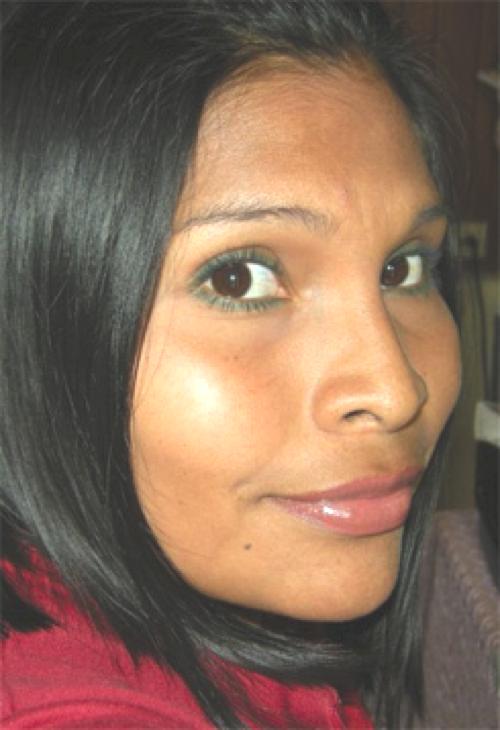 We were especially pleased to see Ela and her beautiful, mystical Bribri Indian smile. Ela was diagnosed last fall with a malignant brain tumor, underwent major surgery, and has been going through difficult radiation and chemotherapy treatments in months since. Young Ela and Ernesto, in whose wedding we participated just a few years ago, are battling bravely against the cancer and it was only with her blessings 'Nesto was able to join this year's
We were especially pleased to see Ela and her beautiful, mystical Bribri Indian smile. Ela was diagnosed last fall with a malignant brain tumor, underwent major surgery, and has been going through difficult radiation and chemotherapy treatments in months since. Young Ela and Ernesto, in whose wedding we participated just a few years ago, are battling bravely against the cancer and it was only with her blessings 'Nesto was able to join this year's  the organic shade-grown coffee farm run by Ernesto's parents at Paraíso--taking short excursions, doing a little hummer banding, photographing butterflies, and telling jokes in English and the trip leader's fractured Spanglish. We thought about Ela a lot while we were in Costa Rica and every day since her surgery have worn in her honor the coconut husk "good juju" hummingbird pendant from our 2006 expedition
the organic shade-grown coffee farm run by Ernesto's parents at Paraíso--taking short excursions, doing a little hummer banding, photographing butterflies, and telling jokes in English and the trip leader's fractured Spanglish. We thought about Ela a lot while we were in Costa Rica and every day since her surgery have worn in her honor the coconut husk "good juju" hummingbird pendant from our 2006 expedition  This native squash,
This native squash,  we caught one immature male RTHU. Next day we got a much earlier start and our reward was a delicious "typical" Costa Rican breakfast with the inevitable black beans and rice--plus the capture and banding of two more young male ruby-throats. This raised our number of RTHU banded among the Chayote at Ujarrás to 48--not bad for a place where Ruby-throated Hummingbirds are "not supposed to be." It's quite interesting how few free-flying RTHU we observed in the Chayote during January 2012 after seeing and banding so many more in November 2011. Although squash vines were still flowering in late January, many native plants were coming into bloom and it's likely the only reason we caught ANY ruby-throats at El Cas in January was the owner had been maintaining sugar water feeders that were a good draw--just like back home at Hilton Pond Center.
we caught one immature male RTHU. Next day we got a much earlier start and our reward was a delicious "typical" Costa Rican breakfast with the inevitable black beans and rice--plus the capture and banding of two more young male ruby-throats. This raised our number of RTHU banded among the Chayote at Ujarrás to 48--not bad for a place where Ruby-throated Hummingbirds are "not supposed to be." It's quite interesting how few free-flying RTHU we observed in the Chayote during January 2012 after seeing and banding so many more in November 2011. Although squash vines were still flowering in late January, many native plants were coming into bloom and it's likely the only reason we caught ANY ruby-throats at El Cas in January was the owner had been maintaining sugar water feeders that were a good draw--just like back home at Hilton Pond Center.
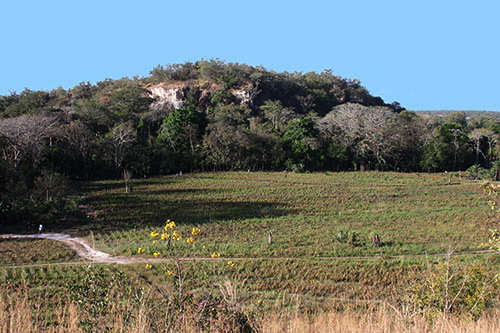
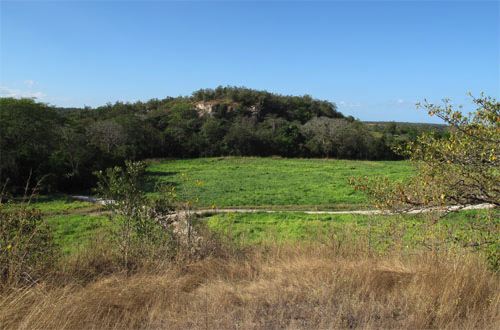
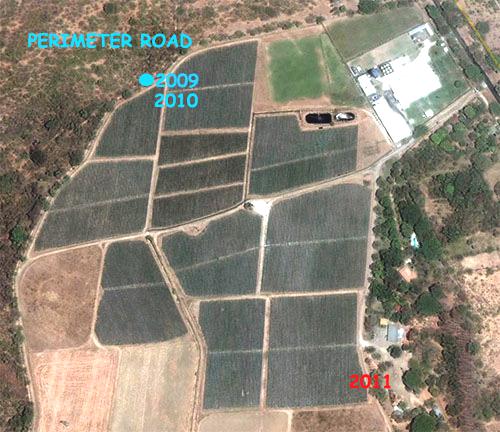
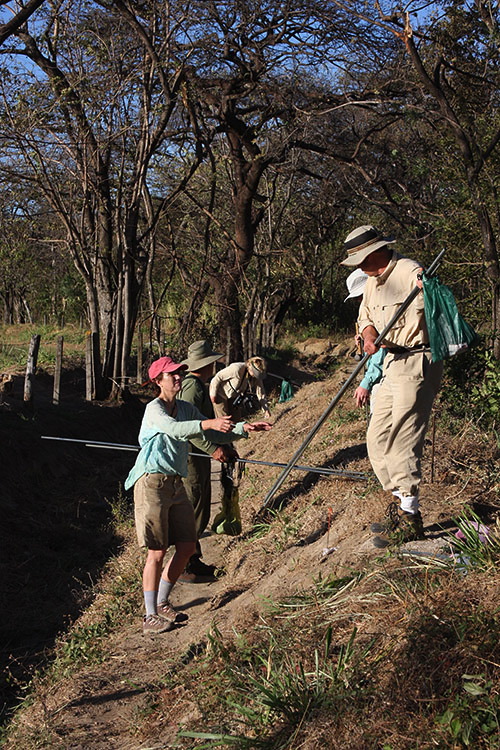 renamed it NaturAloe, and last year finally allowed us to enter the fenced and gated property to conduct our research. This perimeter site was fairly productive outside the fence in 2009-2010, but we did much better at NaturAloe in 2011 after plant manager José Zuniga was kind enough to open the gates for us.
renamed it NaturAloe, and last year finally allowed us to enter the fenced and gated property to conduct our research. This perimeter site was fairly productive outside the fence in 2009-2010, but we did much better at NaturAloe in 2011 after plant manager José Zuniga was kind enough to open the gates for us.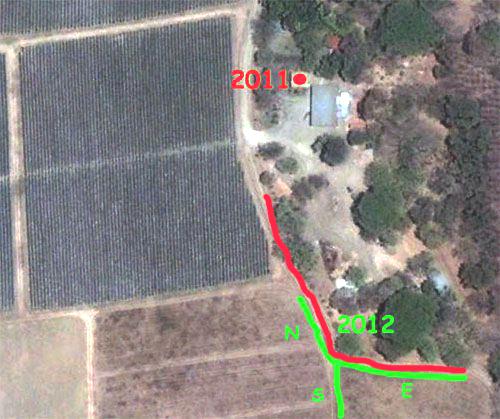


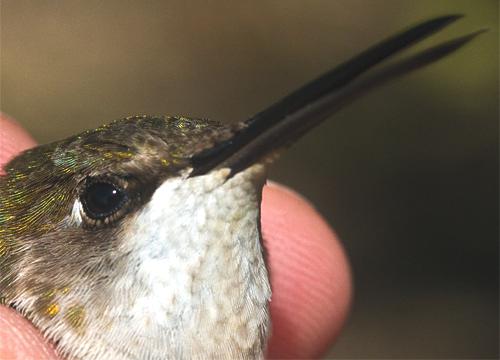


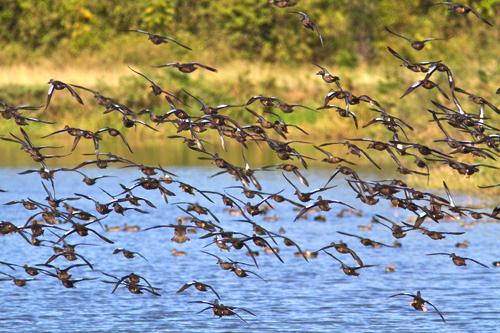
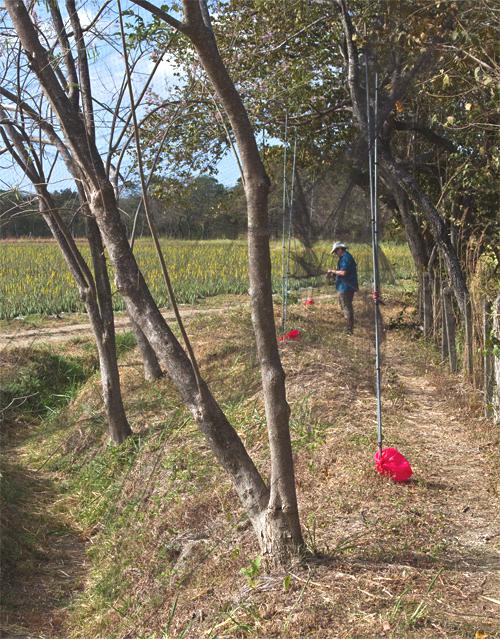
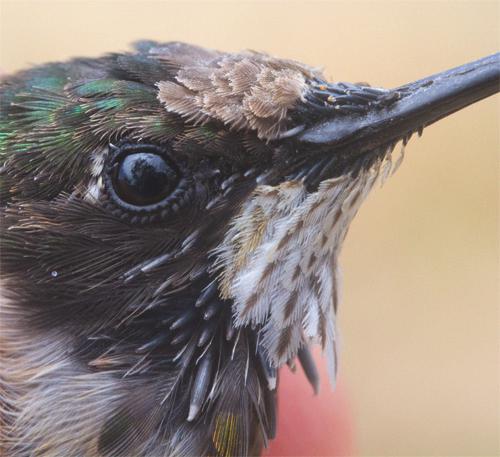
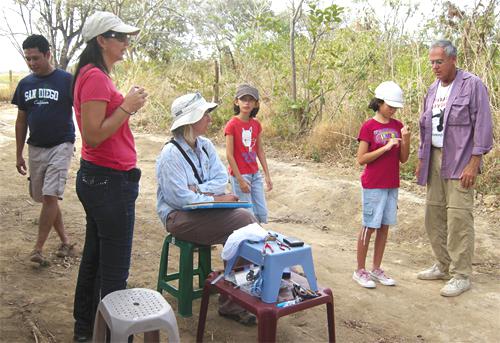
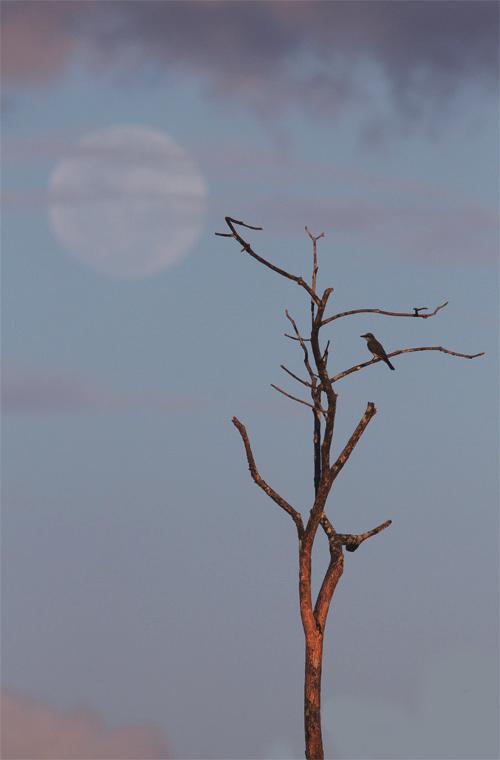

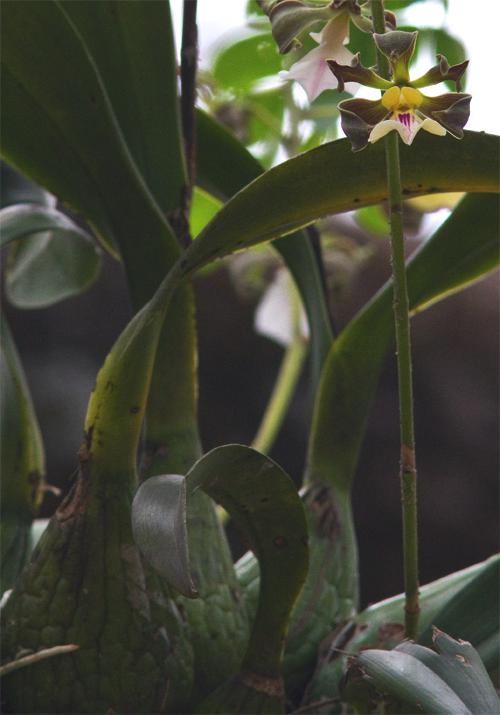
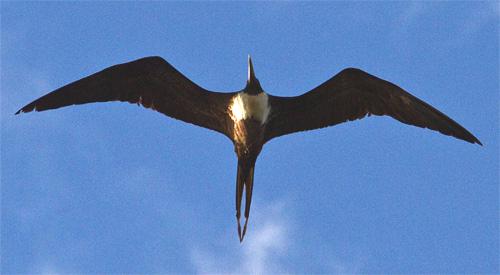
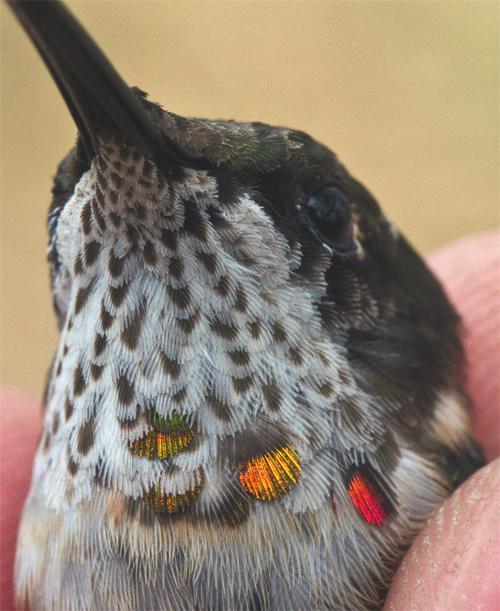
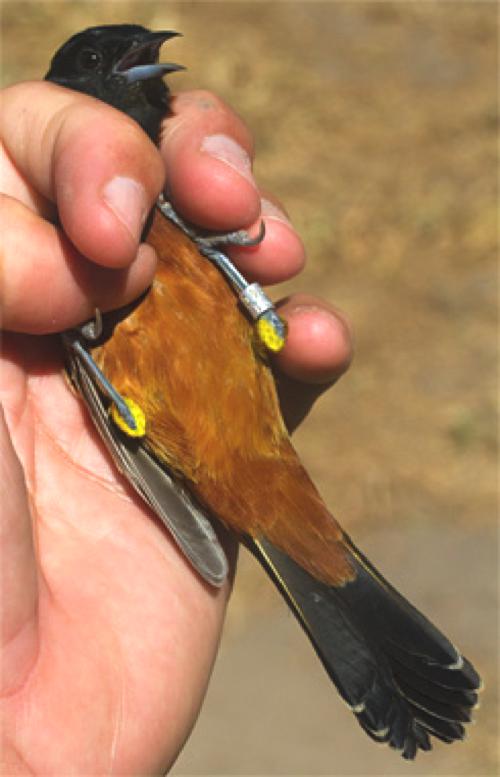 In any case, our able-bodied field assistants managed to catch
In any case, our able-bodied field assistants managed to catch 

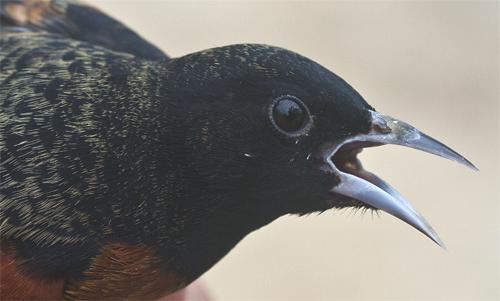
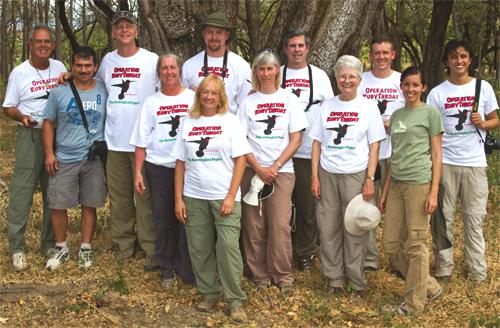
 There several participants took the plunge and ordered Red Snapper Grande--an enormous fresh seafood dish in which the fish hung off both ends of a rather large platter, staring up at diners and baring its teeth
There several participants took the plunge and ordered Red Snapper Grande--an enormous fresh seafood dish in which the fish hung off both ends of a rather large platter, staring up at diners and baring its teeth 
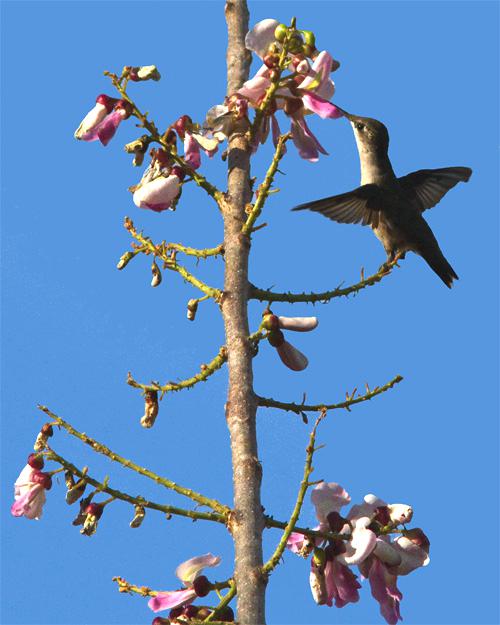
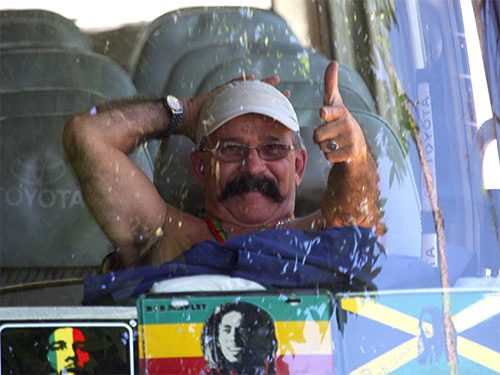

 Oct 15 to Mar 15:
Oct 15 to Mar 15: